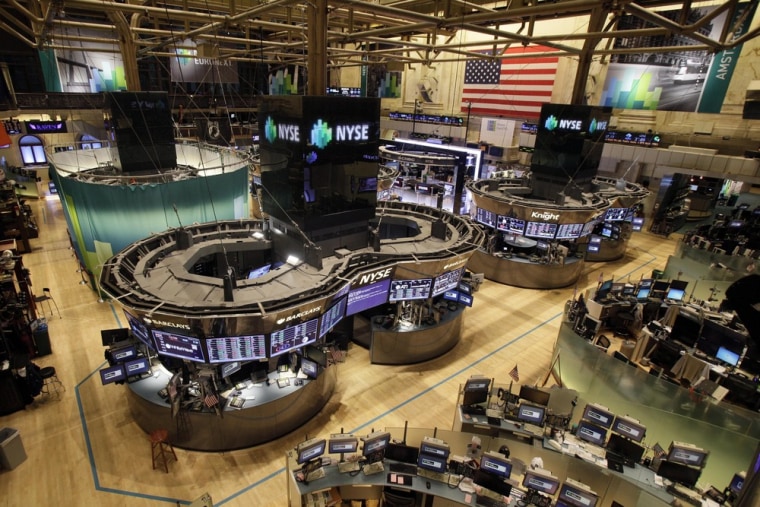Closing the New York Stock Exchange for two days while Hurricane Sandy roars through town is obviously a prudent move. But it's also a nod to the past, and before long the financial markets may be so dispersed and digitized that there isn't even a physical trading floor to shut down when a storm hits.
Gallery: Superstorm brings dangerous floods
For most Americans, the New York Stock Exchange is the face of the stock market and a symbol of American economic might. So it might seem like the two-day shutdown of the NYSE is synonymous with the shutdown of the U.S. stock market. But there are several exchanges that serve as trading venues for U.S. stocks, and they all shut down during Sandy, even though the NYSE is the only one with a physical trading floor threatened by the storm surge in lower Manhattan.
The NYSE's trading floor did once handle the majority of trading in the shares of U.S. firms. But these days, only about 12 percent of buy and sell orders go through the trading floor at 11 Wall Street. "It's a graveyard," says Scott Smith, senior technical analyst for research firm Briefing.com in Chicago, who worked as a trader at the NYSE in the 1990s. "They're not doing much of the trading. The trading floor has become more of a historical museum."
The NYSE has a separate electronic exchange, called Arca, that handles another 12 percent or so of all U.S. trades. Altogether, the NYSE handles a higher volume of trades than any other exchange, but that still amounts to barely one fourth of all trades.
NASDAQ, home to many technology stocks, is an electronic market with no trading floor that accommodates another 22 percent of trades. The remaining trades — more than half of the total — are handled mostly by a handful of lesser-known electronic exchanges, such as BATS, Direct Edge and the Chicago Stock Exchange.
Related: How the election might affect the stock market
Financial journalists reporting live from the NYSE trading floor, surrounded by traders in blue smocks, convey the impression that they're at the heart of the stock market. But most trades these days are executed via computer by market makers who could be in Greenwich, Conn., or Princeton, N.J., or Kansas City or almost anywhere. So the financial markets, in theory, could still operate even if nobody showed up for work at the NYSE.
Buyers and sellers who work for investing firms, Wall Street banks and other large market participants can't exactly telecommute on a whim. They need the type of sophisticated information systems and highly secured networks that most people don't have at home. So even if all stock trades were handled electronically, most buyers and sellers would have to operate from an office environment. Since New York City officials have basically told everybody to stay home for two days, that is effectively what scotched trading at all the big New York-based firms — not the closure of the NYSE trading floor.
NYSE officials insist that their "hybrid" model, blending a trading floor with an electronic exchange, still makes it the world's premiere exchange. And many industry experts agree that the trading floor still serves an important purpose. "It's the trading place of last resort," says Menachem Brenner, a professor of finance at New York University. He points out that traders on the exchange floor are typically able to produce quotes for stock prices that serve as benchmarks followed by other exchanges. The NYSE floor also tends to see a spike in volume when there's some kind of anomaly in the market, which may indicate that buyers and sellers migrate to the NYSE when there's a hint of trouble.
Related: Why many CEOs favor higher taxes
But it may also be possible for the NYSE to play a stabilizing role in the markets without relying on a physical facility that's vulnerable to natural disasters, disruptions that prevent people from getting to work—or terrorism. Computerized trading, for instance, has been associated with wild swings in stock prices triggered by a glitch in trading programs or other technical snafus. "You need a human element in the market, to recognize when something goes wrong," Smith says. "But it doesn't matter where they congregate."
Technology already allows people in far-flung locales to hold video conferences across time zones and message each other instantaneously. And most financial firms — including the NYSE — have robust backup plans, in the aftermath of the 9/11 terrorist attacks, to operate on a virtual basis if necessary. "In years to come we may see the trading floor disappear," Brenner says. That might leave one less thing to worry about during the next 100-year storm.
More business news:
